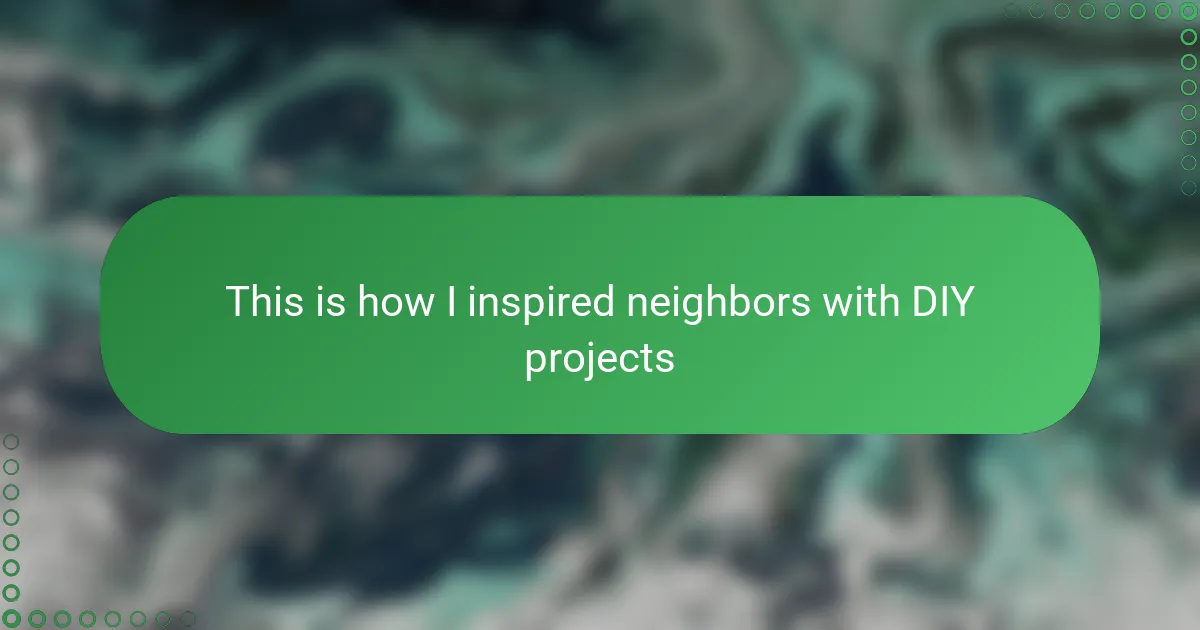Key takeaways
- Handmade paper crafts combine creativity, tradition, and personal expression, turning simple materials into unique artworks.
- Essential tools and techniques, such as proper pressing and drying methods, enhance the quality of handmade paper.
- Engaging in community activities like DIY workshops fosters creativity and strengthens connections among neighbors.
- Maintaining enthusiasm in community craft projects involves regular check-ins, consistent meet-ups, and encouraging collaborative ideas.

Introduction to handmade paper crafts
Handmade paper crafts have always fascinated me because they turn something so simple — plain sheets of paper — into unique, expressive artworks. Have you ever held a piece of paper that felt alive with texture and personality? That tactile experience is what makes handmade paper so inspiring.
When I first started exploring this craft, I was amazed at how much creativity could flow from just a few natural fibers and some patience. It’s not just about making paper; it’s about creating a small piece of nature that you can touch, shape, and share with others.
What I love most is how this craft connects tradition with personal expression. Each sheet tells a story, and each project becomes a reflection of the maker’s imagination. Isn’t there something deeply satisfying about bringing something entirely new into the world with your own hands?
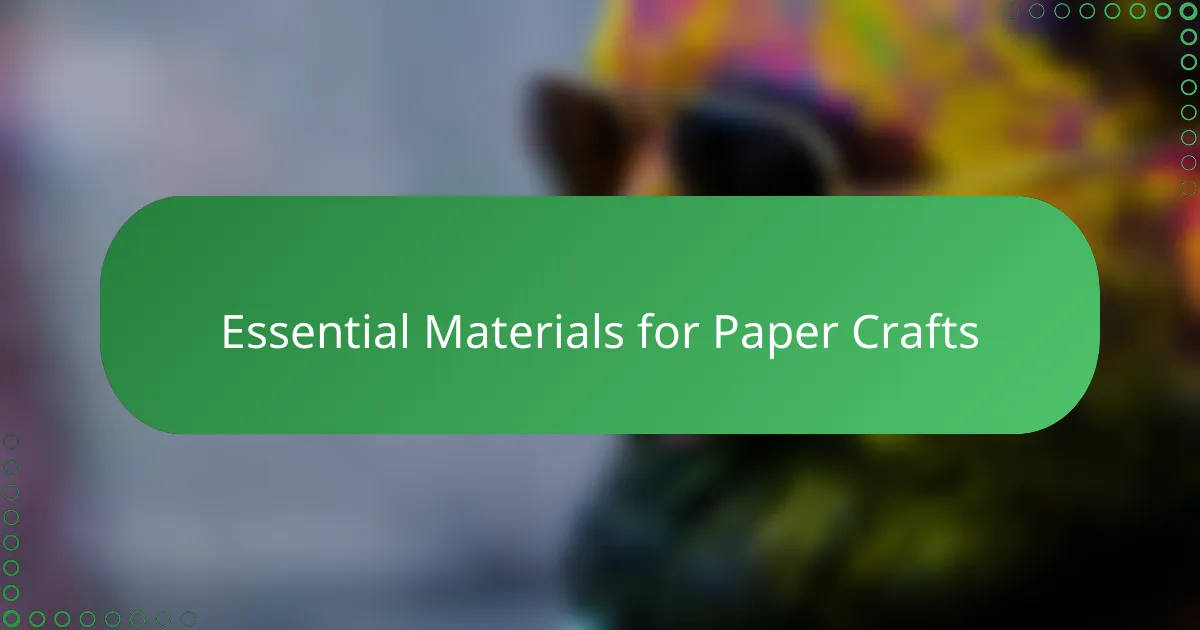
Essential materials for paper crafts
Starting with the basics, you’ll want to gather a few key materials that set the stage for your paper crafting journey. I always keep a sturdy deckle mold and a basin handy—it’s amazing how these simple tools shape the very foundation of every sheet. Have you ever noticed how the right tools make even the most intricate projects feel doable?
Then, there’s the fiber itself. I’ve found that experimenting with a variety of natural fibers—from cotton to recycled scraps—adds a personal touch and invites endless creativity. Each fiber brings its own texture and strength, making every sheet distinct; it’s like the paper has its own little personality before you even start crafting.
Of course, no paper craft is complete without the right finishing touches. Tools like sponges, presses, and drying racks might seem trivial at first, but they transform wet pulp into smooth, durable paper that invites your artistic vision. Do you remember that moment when a soggy pulp turns into a solid, beautiful sheet? It’s pure magic, and the right materials make all the difference.
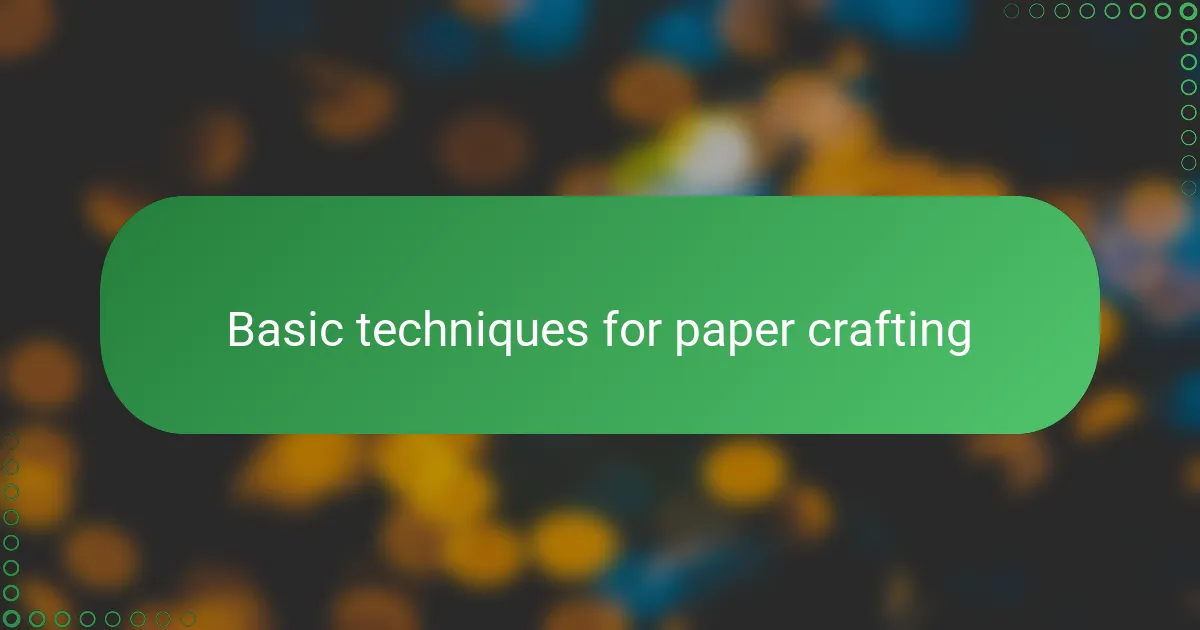
Basic techniques for paper crafting
Mastering basic techniques is where the magic of paper crafting truly begins. I remember my first few tries at pulp-making—mixing fibers just right to get the perfect consistency was a bit like cooking, requiring patience and a little trial and error. Have you ever felt that moment when the pulp finally forms a smooth, even sheet on the mold? It’s incredibly rewarding.
Another crucial skill I’ve learned is pressing and drying the paper properly. At first, I thought it would be enough to just let the paper air dry, but I quickly realized that using a press or placing heavy books on top made a world of difference in creating a stronger, flatter sheet. It’s these small steps that elevate a simple sheet of pulp into something you can proudly call handmade paper.
Folding, cutting, and layering are basic yet powerful techniques to begin adding dimension and character. When I fold a freshly dried sheet, I like to think about how each crease can become the basis for an intricate design or a hidden message. Do you ever find that these simple moves unlock your creative flow as much as the initial papermaking itself?
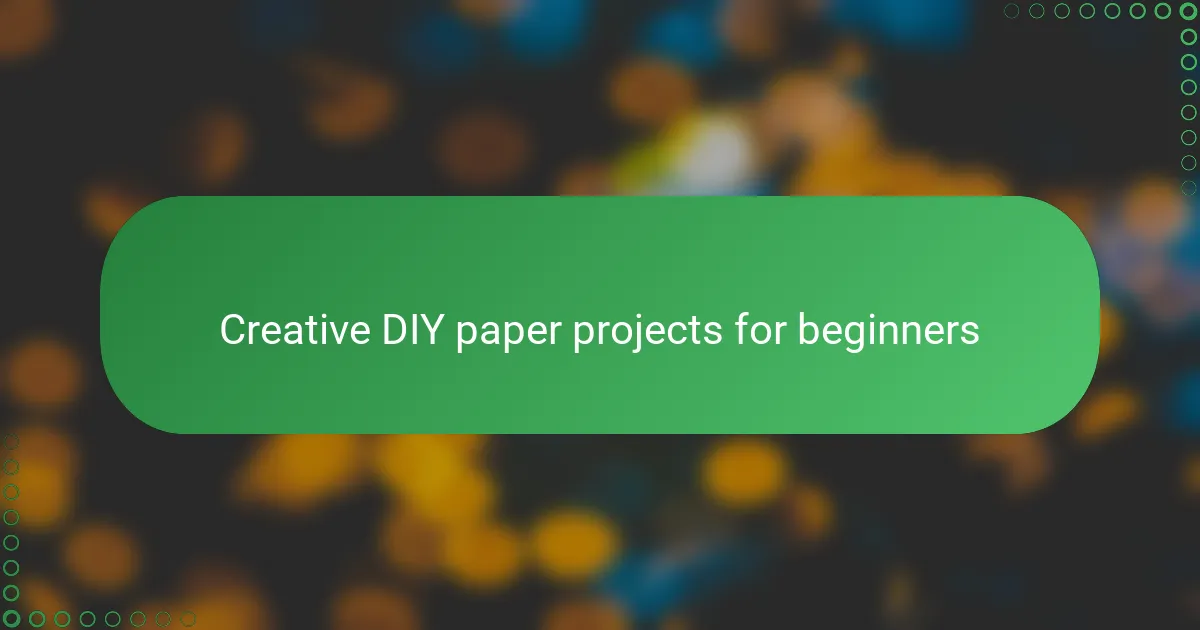
Creative DIY paper projects for beginners
Starting with creative DIY paper projects can be surprisingly simple and incredibly rewarding. I found that making decorative paper bookmarks was a perfect beginner project—it uses basic cutting and folding but lets you play with colors and textures right away. Have you ever been delighted by how such a small, simple item can brighten your reading experience?
One of my favorite starter projects was crafting paper flowers. It felt like magic to transform flat sheets into delicate blooms with just a few snips and folds. At first, I wondered if I could really capture the intricacy of petals using handmade paper, but each flower I made gained its own charm, making me realize creativity is more about patience than perfection.
Sometimes, the easiest projects are the most inspiring. I remember designing personalized greeting cards with hand-pressed paper and simple embellishments—that tactile, thoughtful touch spoke louder than any store-bought card could. Don’t you think projects like these remind us that creativity doesn’t have to be complicated to be meaningful?
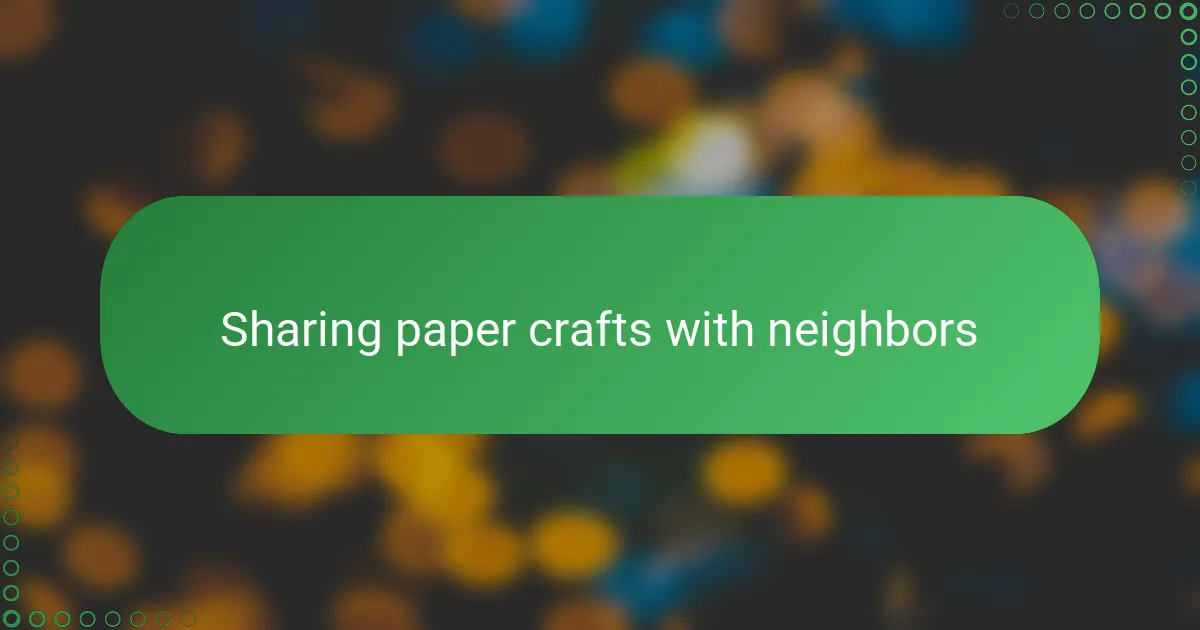
Sharing paper crafts with neighbors
One of the most rewarding parts of crafting handmade paper has been sharing my creations with neighbors. I recall the joy in their eyes when I handed over a simple, textured card made from my own paper— it sparked conversations and curiosity that I never expected. Have you ever noticed how a little handmade gift can bring people closer?
Sometimes, I’d leave small bundles of colorful paper scraps on neighbors’ doorsteps, hoping to inspire them to try something new. It was amazing to see how these humble packages turned into spontaneous collaborations and shared projects just down the street. Isn’t it wonderful when creativity becomes a neighborhood affair?
There’s something special about exchanging handmade crafts that goes beyond the paper itself. It’s about building connections, sharing stories, and spreading a sense of joy that’s woven into every fiber. Have you experienced that moment when a simple craft bridges the gap between strangers and turns them into friends?
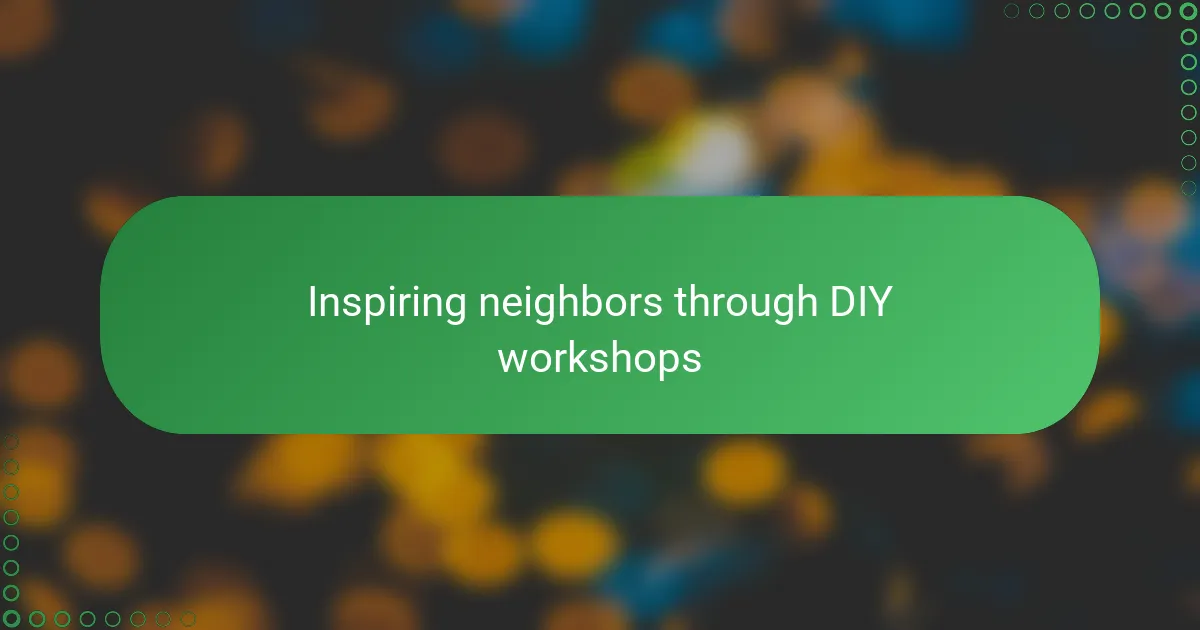
Inspiring neighbors through DIY workshops
Hosting DIY workshops in my neighborhood became one of the most fulfilling ways to inspire others with handmade paper crafts. I remember setting up a little table in my backyard, surrounded by curious neighbors eager to learn how to transform pulp into textured sheets of paper. There’s something truly magical about watching that first flutter of excitement when someone realizes they can craft something beautiful with their own hands.
Each workshop was a chance not just to teach techniques, but to share stories and spark creativity among people who hadn’t considered themselves “artistic” before. One neighbor told me she never thought she could make anything worthwhile, but by the end of the session, she proudly held up a sheet of handmade paper decorated with dried petals. Moments like that made me appreciate how accessible and empowering this craft can be for everyone.
Have you ever noticed how a simple group activity can create a ripple of inspiration that spreads far beyond the initial gathering? These workshops did exactly that—neighbors started swapping ideas, trading materials, and even organizing their own mini-projects. It wasn’t just about making paper; it became a shared experience that strengthened our community and brought a fresh sense of connection to a familiar place.
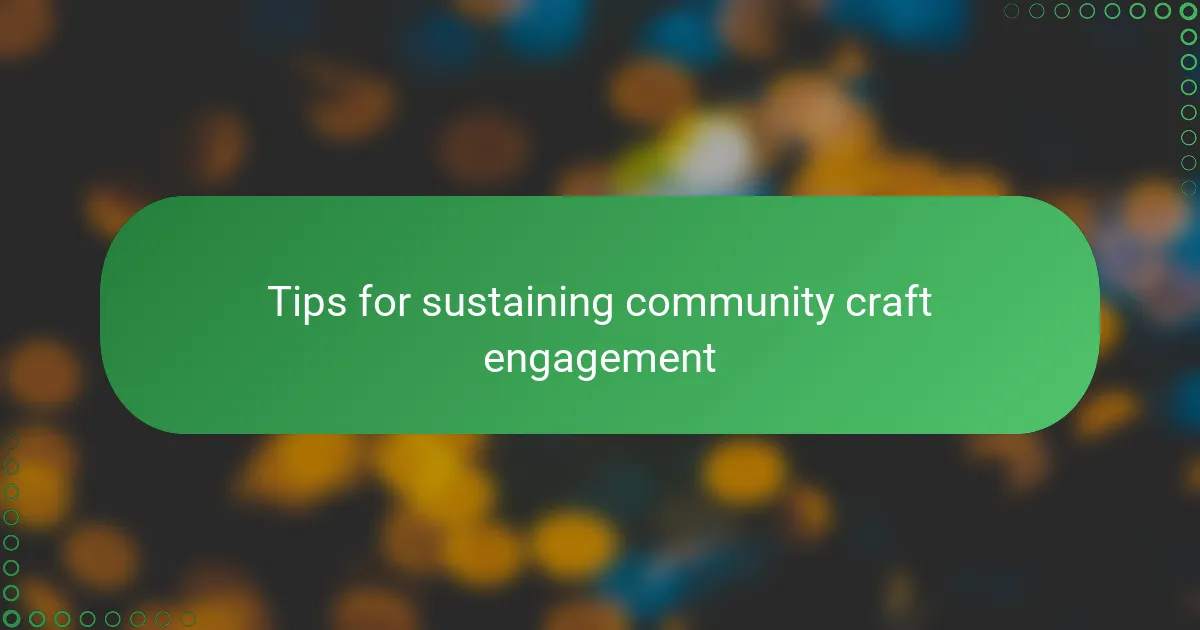
Tips for sustaining community craft engagement
Keeping the momentum alive in community craft projects means staying connected and making everyone feel valued. I’ve found that checking in regularly—whether by sharing new project ideas or simply celebrating others’ creations—keeps enthusiasm bubbling. After all, who doesn’t appreciate a little encouragement when they’re exploring their creativity?
Creating a routine around craft meet-ups or sharing sessions can also work wonders. When neighbors know there’s a monthly paper crafting circle, they’re more likely to stay involved and look forward to it. It’s amazing how a simple, consistent gathering builds a rhythm that everyone can count on.
And here’s something I learned firsthand: inviting feedback and fresh ideas makes the group stronger. When someone suggests a new technique or project, it sparks curiosity and gives everyone a chance to contribute. Isn’t that collaborative spirit what turns a hobby into a thriving, supportive community?
